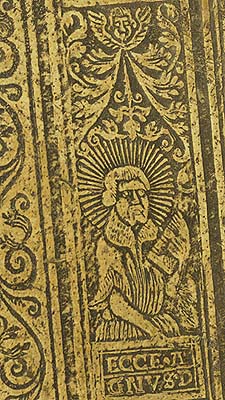
Leather and Chains
![]()
The study of the manuscript book as a physical object is known as codicology
– from codex, a Latin word for "book," especially
one whose pages can be turned, as distinguished from a scroll. Codicology
is concerned with writing surfaces (parchment and paper) as well as the
covers, stitching, etc. that make up a binding. Since bindings bore the
brunt of wear and tear, the leaves that they protected have tended to
outlast them; it is not uncommon for manuscripts to have been rebound
several times. But, as the following examples show, a book’s original
covers can preserve important clues to a text’s origin, owners,
or how and where it was read over time.

Copyright
© 2002 Division of Rare & Manuscript
Collections
2B Carl A. Kroch Library, Cornell University, Ithaca, NY, 14853
Phone Number: (607) 255-3530. Fax Number: (607) 255-9524
For
reference questions, send mail to:
rareref@cornell.edu
If you have questions or comments about the site, send mail to: webmaster.